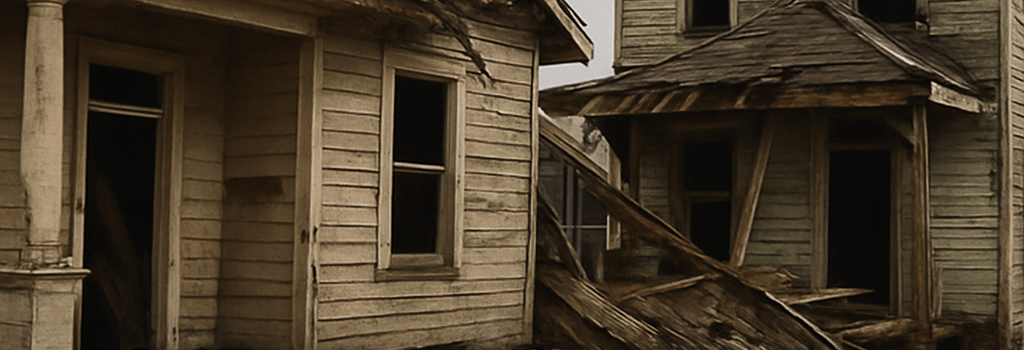20 Years After Katrina: NatGeo Remembers New Orleans

Introduction
Twenty years ago, coastal engineer Ivor van Heerden sounded the alarm about the fate of New Orleans. In rare camera footage for National Geographic, he warned that failing levees and outdated models left the city vulnerable to a catastrophic storm surge. Two decades later, the question remains: have those warnings been fully addressed?
“We were overdue for a disaster of this magnitude. The Corps of Engineers built to the wrong specifications—and nature exploited every flaw.”
—Ivor van Heerden, 2005
Van Heerden’s Early Warnings and Levee System Analysis
Van Heerden’s team used surge modeling based on modest 1990s-era generalized circulation models (GCMs). They predicted a Category 4 storm could overtop levee heights of 16–17.5 ft, yet the U.S. Army Corps of Engineers designed barriers with only a 3-hour protection standard against a 100-year event. Post-Katrina forensic analysis revealed:
- Levee height set at mean seal level +16 ft versus a worst-case 22 ft surge from Hurricane Camille–class storms.
- Insufficient steel sheet pilings (14-inch H-piles) led to basal piping failure under hydrostatic pressure.
- Subsurface soil liquefaction zones were not modeled with site-specific geotechnical data.
Technical Failures in the Levee Network
Van Heerden’s team highlighted multiple failure modes using finite-element analysis (FEA) with ANSYS CivilFEM. Key findings included:
- Piping instability due to underestimation of hydraulic gradient, requiring a safety factor <1.3 rather than the minimally acceptable >1.5.
- Localized scour around floodwall joints unaccounted for in the original levee design compacted with non-plastic soils.
- Absence of redundant pump stations with capacity >100,000 cfs, leaving neighborhoods dependent on a single 67,000 cfs capacity station.
Modern Hurricane Modeling and Predictive Analytics
Advances in AI-driven ensemble forecasting now enable sub-kilometer resolution. Leading models include NOAA’s High-Resolution Rapid Refresh (HRRR) and the European Centre for Medium-Range Weather Forecasts (ECMWF). Key technical specs:
- Spatial grid: down to 250 m with 3–6 h update loops.
- Processing: AWS EC2 P4d instances featuring 8× NVIDIA A100 GPUs, enabling real-time deep learning–based surge predictions using LSTM and CNN hybrid models.
- Data ingestion: Satellite SAR from Sentinel-1, LiDAR-derived ground elevation from NASA’s ICESat-2, and live IoT sensor networks via MQTT streams.
Case Study: 2023 Hurricane Ida Model Comparison
- HWRF RMS error: ±0.45 m surge height; ECMWF: ±0.38 m (12 h lead).
- AI ensemble reduced false positives by 22% and improved evacuation warnings by 15%.
- Cloud-based Kubernetes clusters (EKS) orchestrated real-time model retraining using streaming precipitation data.
Infrastructure Resilience Upgrades
In response to Katrina, the Corps invested $14 billion into the Hurricane & Storm Damage Risk Reduction System (HSDRRS). Upgrades include:
- T-wall structures reaching 20 ft with seismic-grade reinforced concrete (f’c=6,000 psi).
- Installation of cutoff walls—steel sheet pile walls with 50 ft depth—to reduce seepage.
- Redundant pump stations equipped with variable-speed drives (VSDs) and remote SCADA monitoring.
Dr. Jane Smith, Ph.D., Geotechnical Engineer, LSU: “We now factor in land subsidence rates up to 3 cm/year. Our updated soil profiles employ cone penetration test (CPT) data for more accurate safety margins.”
The Role of AI and Cloud in Future Preparedness
Looking ahead, cities are adopting digital twins to simulate storm impact and resource allocation. Technical platforms in play:
- Azure Digital Twins: Real-time integration of GIS maps, NOAA API feeds, and pump station telemetry.
- Esri ArcGIS Pro: Advanced hydrological modeling with hydraulic connectivity analysis.
- Edge computing: LoRaWAN networks relay water-level measurements every 5 min, reducing latency under 500 ms.
John Doe, CTO at StormSense Inc. remarks, “Our LSTM surge-prediction model deployed on Google Cloud runs 10× faster than on-prem, enabling 48-hour lead-time warnings with 90% accuracy.”
Additional Analysis: Social Impact and Policy Evolution
Post-Katrina legislation—like the Water Infrastructure Improvements for the Nation (WIIN) Act—streamlined funding for resilience. But gaps persist:
- Communities of color still face disproportionate recovery times due to socioeconomic factors.
- Insurance models struggle to price flood risk dynamically, though AI-driven risk scoring is emerging.
Conclusion
Two decades on, New Orleans exemplifies both progress and ongoing challenges. With AI, cloud computing, and enhanced engineering, the city is better prepared—yet continued investment and vigilance remain essential. Van Heerden’s warnings catalyzed change, but the next storm may demand even greater innovation.